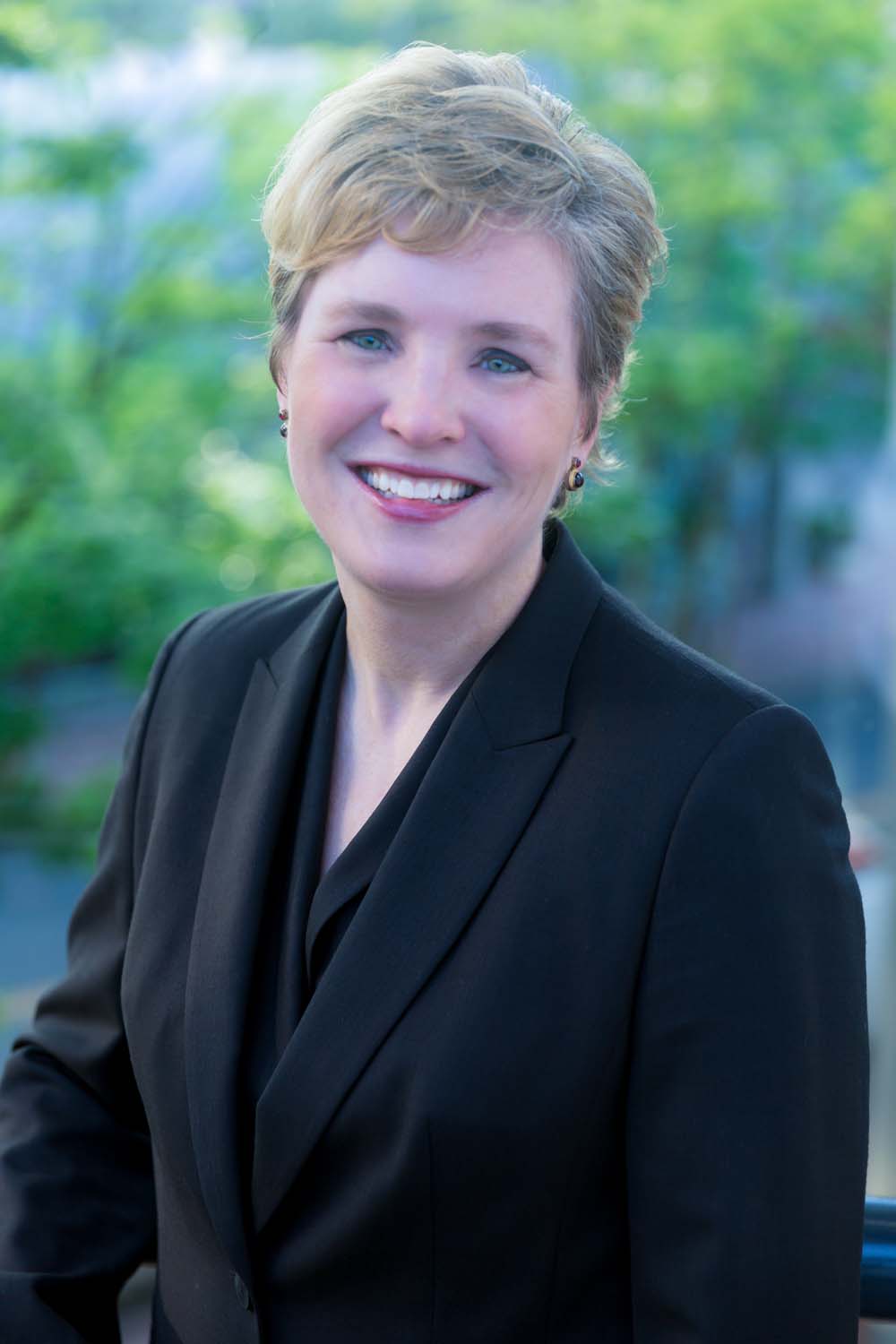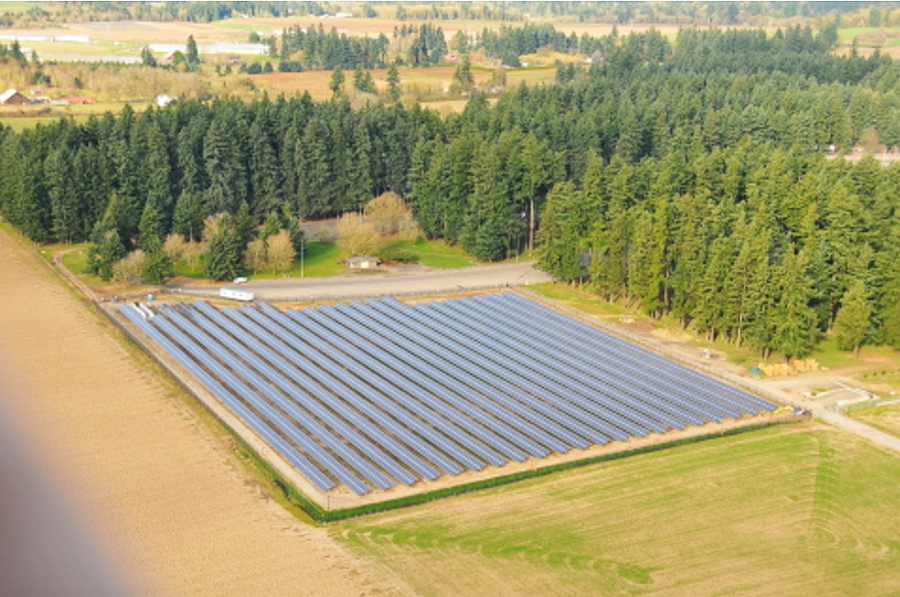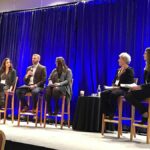A Q&A with Maria Pope, senior vice president of power supply & operations, and resource strategy at Oregon’s largest utility, Portland General Electric.
Solar energy could soon be a bright spot for Oregon’s rural economy. Over the next five years, 1,500MW of solar electric capacity is expected to be installed in the state, much of it in rural counties east of the Cascades. Plummeting costs for solar panels and the state’s 50% by 2040 renewable portfolio standard will kick start development of the renewable resource. Several new large projects, such as the 56MW Gala Solar project from Avangrid Renewables under construction near Prineville, are testament to the sector’s recent growth.
While residential and commercial solar projects have gone through a recent resurgence, larger utility-scale projects represent most of the future solar capacity slated to be built in the state. Maria Pope, senior vice president of power supply & operations, and resource strategy at Oregon’s largest utility, Portland General Electric (PGE), talked to Oregon Business about the company’s approach to using solar as an energy resource.
Oregon Business: Portland General Electric has executed more than 200MW of solar power purchase agreements since July 2015, compared with less than 10 MW beforehand. Why have you substantially increased your purchase of solar in the past couple of years?
Maria Pope: Most of these contracts have come to us through qualifying facilities associated with PURPA (Public Utility Regulatory Policies Act) legislation. We saw a big uptick in these. But just because people send us a contract with their intention to build a site, it frequently does not mean that they end up constructing. This is because of a variety of reasons: they have a challenging time getting financing; the site may not be suitable for solar production; they may have interconnection issues where they can’t get the power to us. And so, the contracts that we currently have in place aren’t representative of those that will move forward. It will probably be a percentage of those that actually come to fruition.
OB: What is your strategy toward solar energy. Do you have more interest in it?
Pope: We have a legislative requirement taking us to 50% renewable by 2040. To meet that goal in a cost effective and reliable fashion we need to make sure we are looking at all types of renewables. We have been proponents of solar for quite a period of time. We will continue to be proponents in the future. We are also proponents of wind energy; we have several wind farms – both that the company owns and that we have contracts with. We have also been proponents of wave energy. We are looking at a variety of technologies.
There are some utility-scale projects this side of the Cascades. But the fact is we have a lot of cloud cover and so the solar penetration rates are much less on this side of the Cascades than they are on other side of the Cascades. Then you get into land issues and transmission issues. But you will probably see most of those large-scale developments on the other side of the state.
OB: What are the advantages of solar compared with other sources of alternative clean energy, such as wind and geothermal?
Pope: They all have advantages and disadvantages. Renewables in general that are not dispatchable are subject to generation conditions that mother nature provides. So when the wind blows you get a lot of energy; when the sun shines you get a lot of energy. When the sun isn’t shining or it is nighttime then you have a problem. We need to have a broad portfolio of options because quite frankly if we just had solar power we would not be able to store all of the quantity of power needed to carry us through the night hours. You need to have a variety of options. That variety is how you can get to such a high percentage of renewables like 50%.
OB: How cost competitive is solar compared to other clean alternative sources of energy, such as wind?
Pope: It is still more expensive than wind energy. But both sources of energy have had their costs decline quite rapidly, solar in particular. But wind is still less expensive. Solar projects may be cheaper to build in Arizona or Texas or southern California.
OB: Do you think solar can one day be cost competitive with natural gas-fired generation?
Pope: They have very different economics. When you have installed your solar system, your variable cost of energy is zero because you are relying on the sun. For natural gas, you are burning it and buying that gas. But when it is dark there is no solar generation at all, so when it is dark we need to continue to explore new technologies, but we also need to run natural gas plants. We see them as complementary not as competing.
OB: Do you find it more cost effective to buy solar power from producers rather than generate solar power yourself?
Pope: We look at everything across the board. We go out and do competitive bids to see what is the most cost effective. Sometimes the PPAs (power purchase agreements) come with high prices given the profit requirements of the developers and transmission constraints they have. We do develop our own sites. That is cost competitive as well. We like to make sure for customers that we have a wide variety of options for projects that we may build and own or that is solely third party. The most important thing is these solar resources are the lowest possible cost.
OB: Why do you still own very few solar projects?
Pope: The costs have been coming down, but they have traditionally been high and they still are higher than alternatives. About two years ago, we finished a new wind farm for 267MW of electricity. That kind of installation was much more cost effective than solar at the time. We will have another RFP (request for proposal) in the late 2017, early 2018 timeframe for additional renewable resources. Solar I am sure will be much more cost effective this time around and we would expect to see some very good bids.
OB: Your IRP (integrated resource plan) calls for adding 175MWa of renewable resources (equivalent to 515MW nameplate of wind generation). How much of this do you envision comprising solar resources?
Pope: We will ask for all renewables. We will not designate portions for a specific type of renewable because it is important they all compete based on the characteristics of the energy generation they have and the cost of energy generation.
OB: How much of an impediment are transmission constraints to your choice to use solar as an energy resource?
Pope: There are transmission constraints for all energy development that is on the other side of the state. We have to make sure we are able to transmit the energy into areas where people are living and consuming the energy. It is very hard to build new transmission lines.
OB: Do you see opportunity for distributed solar energy that doesn’t need transmission?
Pope: We do. We have seen tremendous growth in that. We haven’t seen as much growth in our geography as we have seen in some states. The capacity factor and efficiency in this geographic region is fairly low given the amount of cloud cover we have. It is much higher on the other side of the state and it is much, much higher in southern California and the desert southwest. We do buy energy out of those regions and increasingly we are buying excess solar power out of California and other places.




